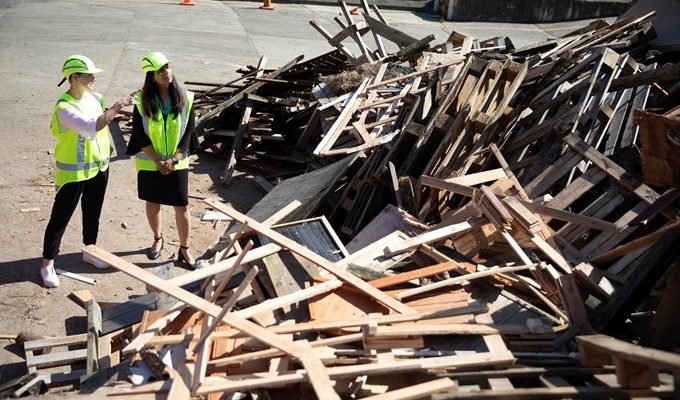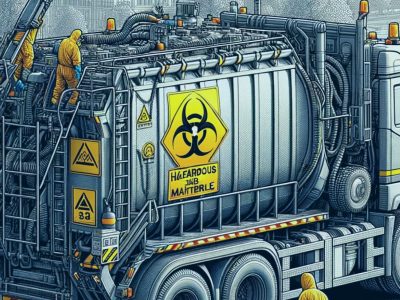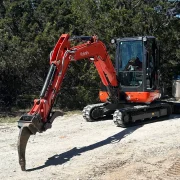The difference between hazardous and non-hazardous materials is significant, yet it often goes unnoticed. Hazardous materials can pose a significant danger to people, animals, and the environment if not handled properly. On the other hand, non-hazardous materials are safe to handle and do not harm human health or the environment. In this blog post, we will explore hazardous and non-hazardous materials, how to identify them, and what sets them apart. We’ll also discuss the importance of proper disposal for both types of materials and how you can safely dispose of hazardous waste. Read on to learn more about the differences between these two types of materials and why it’s crucial to understand them.
What are Hazardous Materials?
Hazardous materials are substances that pose a potential risk to human health, the environment, or property. They can take many forms, including chemicals, gases, liquids, and solid materials like asbestos. Some common examples of hazardous materials include gasoline, pesticides, and medical waste. Because of their potential danger, hazardous materials are subject to strict regulations governing their transportation, storage, and disposal. It is important for individuals who work with or come into contact with hazardous materials to be properly trained in handling them safely to minimize the risk of harm.
What are Non-hazardous Materials?
Non-hazardous materials are materials that do not pose a risk to human health or the environment when handled, transported, or disposed of properly. These materials are typically not flammable, explosive, corrosive, reactive, or toxic. Examples of non-hazardous materials include paper products, cardboard boxes, plastics, glass, and certain types of metals. It is important to properly identify and handle non-hazardous materials to ensure their safe and environmentally-friendly disposal. This can help reduce the impact on the environment while promoting sustainability in industries that use these types of materials.
How to Identify Hazardous and Non-Hazardous Materials?
Identifying hazardous and non-hazardous materials is an important step in ensuring safety in the workplace. Hazardous materials can pose a risk to human health or the environment, while non-hazardous materials do not. Here are some tips on how to identify hazardous and non-hazardous materials:
- Understand regulatory standards
The Occupational Safety and Health Administration (OSHA) sets the regulations for hazardous materials handling in the United States. The OSHA website provides information on specific substances and general requirements for labelling, storage, and employee training.
- Review safety data sheets
Each of them has a unique set of characteristics that must be considered when determining its hazard classification. The safety data sheet (SDS) is a key reference for this information. SDSs are usually available from the manufacturer or distributor and should be consulted whenever a new substance is introduced into the workplace.
- Identify hazard symbols and labels
Hazardous chemicals are often labelled with special symbols indicating the hazard type present. These symbols are standardized by the National Fire Protection Association (NFPA) and are intended to provide quick visual cues about the potential risks of a substance.
- Consider physical and chemical properties
In addition to understanding the hazards associated with a substance, it is also important to consider its physical and chemical properties. This information can help you determine how best to store and handle the material and what personal protective equipment (PPE) may be necessary.
- Seek professional assistance
If you are unsure how to classify or handle hazardous material properly, it is always best to seek professional assistance.
Differences Between Hazardous and Non-Hazardous Materials
Waste classification is critical to ensure environmental safety and human health. The key difference between hazardous and non-hazardous materials is their potential to cause harm. Hazardous waste is regulated by government agencies like the EPA, requiring specialized disposal procedures. Non-hazardous waste can safely be disposed of in regular trash bins or recycled. Proper labelling is essential for avoiding confusion between hazardous and non-hazardous waste.
How to Dispose of Hazardous Materials Safely
Disposing of hazardous materials can be daunting, but it is important to do so safely to protect the environment and human health. Here are some tips for disposing of hazardous materials safely:
- Identify the type of material: Before disposing of any hazardous material, it is important to identify its type. Different types of hazardous materials require different disposal methods.
- Check local regulations: Different areas may have different regulations regarding the disposal of hazardous materials. It is important to check your local regulations before disposing of any hazardous material.
- Use designated drop-off locations: Many communities have designated drop-off locations for hazardous materials. These locations are often staffed by trained professionals who can ensure that the materials are disposed of safely.
- Don’t mix materials: Mixing different types of hazardous materials together can create dangerous chemical reactions. It is important to keep each type of material separate and dispose of them accordingly.
Following these tips can help ensure that hazardous materials are disposed of safely and responsibly.
Benefits of Proper Disposal of Non-Hazardous Materials
Proper disposal of non-hazardous materials can have a significant positive impact on the environment and public health. When these materials are disposed of improperly, they can contaminate soil and water sources, leading to long-term environmental damage.
Also, improper disposal can pose health risks to individuals who come into contact with these materials. By disposing of non-hazardous materials in the correct manner, such as recycling or using designated waste disposal sites, we can help limit the negative effects on our planet and protect public health.
Proper disposal also promotes sustainability by reducing the need for new resources to be extracted from the earth. Taking responsibility for properly disposing of non-hazardous materials is an important step toward a cleaner and healthier world.
Conclusion
In conclusion, it is crucial to understand the difference between hazardous and non-hazardous materials. Hazardous materials pose a threat to human health and the environment, while non-hazardous materials do not. Identifying these materials correctly is essential to ensure their safe handling and disposal. Safe disposal of hazardous materials requires careful consideration and adherence to regulations and safety protocols. On the other hand, proper disposal of non-hazardous materials can reduce waste and environmental impact. Let’s work together to keep our communities safe by responsibly disposing of hazardous and non-hazardous materials.












Comments